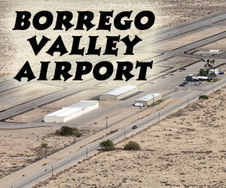Salton Sea - Dust Mitigation Continues
Last updated 7/10/2016 at 9:44am
The Water Conservation and Transfer Project currently being implemented in Southern California is one of the largest agricultural-to-urban water transfer projects in the entire world. The long-term transfer of up to 303,000 acre-feet of water annually from Imperial Irrigation District (IID) to the San Diego County Water Authority and the Coachella Valley Water District, means more water supply reliability for Drought stricken California. It also requires mitigation of potential impacts on the Salton Sea.
Formation Environmental (FE) is an environmental consulting firm, based in Boulder, Colorado, specializing in the application of advanced remote sensing. FE's clients use information from remote sensors to make better management decisions related to water resources, agricultural water usage, long–term environmental stewardship, and air quality. FE is currently working with the Imperial Irrigation District and other multi-disciplinary team members in modelling, monitoring, and mitigating the effects of the Water Transfer Project.
The Water Transfer Project is just one of the factors, along with Drought conditions, reduced inflows from Mexico, and climate change, expected to affect Salton Sea inflows and water balance.
The air quality models are sensitive to several inputs such as surface type and surface roughness. Surface roughness is a key factor in estimating emission potential from source areas, so understanding the spatial distribution of vegetation is very important. This is a challenging task because the vegetation in the natural desert environment surrounding the Salton Sea tends to be quite sparsely distributed.
After determining the surface characteristics of the newly exposed playa, FE’s team engineers developed a mitigation strategy for the potentially emissive surfaces. One of the most straightforward ways of mitigating dust emissions is to simply apply water. However, using water for dust control is extremely expensive and runs counter to the overall water conservation objectives of the project.
Fortunately, several other cost and resource-effective measures are available. For example, increasing surface roughness with equipment or vegetation has proven highly effective on other projects.
Treatments considered to control dust include:
Vegetation – if there is a water source and an area that will support vegetation, simply increasing the amount of vegetation in particular areas can limit the amount of dust emissions.
Surface roughening – essentially done by plowing the land in such a way that creates micro-topographies (or trenches) to impede the flow of sand-sized particles across the surface of the exposed area
For one of the dust control pilot projects, the goal was to increase the surface roughness around newly exposed playa by plowing deep furrows into the smooth surface. The lifespan and effectiveness of the treatments are dictated by the surface material type and by deposition and erosion over time.
Ultimately what is need is a consistent workflow to analyse and track the effectiveness of dust control over time, that way scientists and engineers can figure out how long the dust control effectiveness will last.



